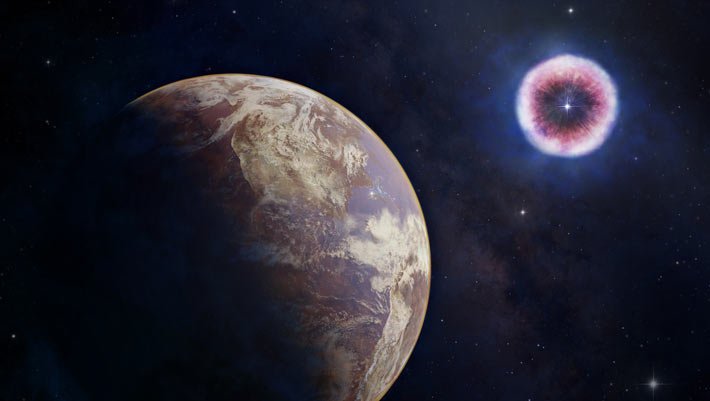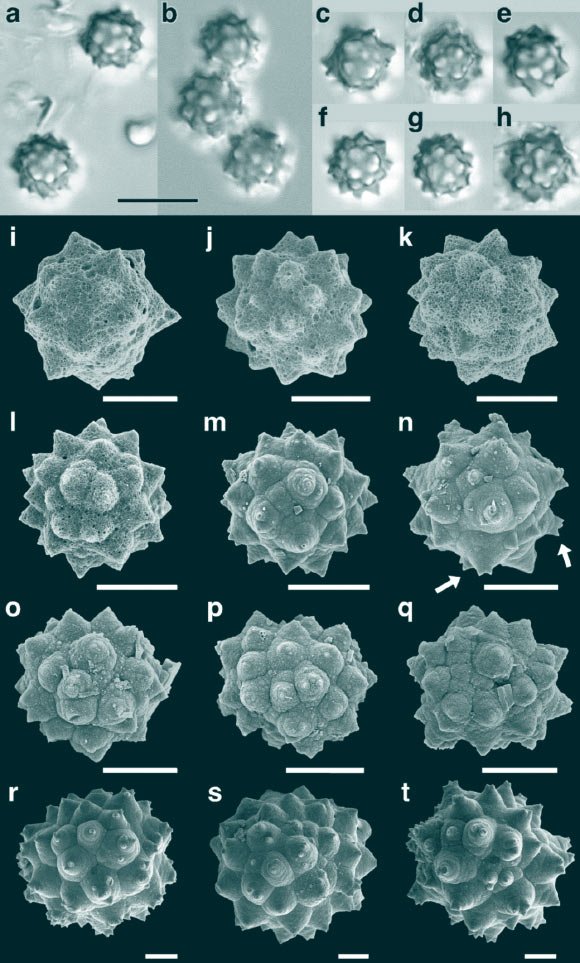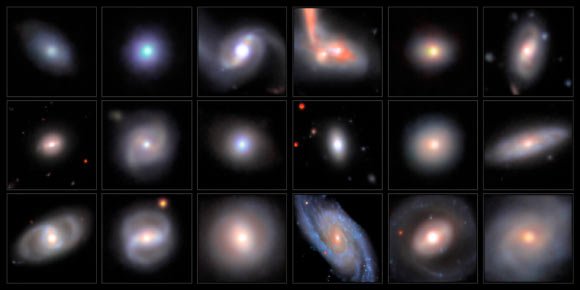Named SNR J0614-7251 and SNR J0624-6948, the newly-discovered supernova remnants reside in the outskirts of the Large Magellanic Cloud, the largest satellite galaxy of the Milky Way.

In the center of the image, the stars cluster to form a bright and dense green candy floss-colored haze, that is the Large Magellanic Cloud. Scattered across the middle of the image are about 50 small yellow crosses, some of them are so close to one another that they almost overlap. SNR J0624-6948 (orange, higher in the image) and SNR J0614-7251 (blue, lower in the image) are seen in the lower left quarter of the image. Image credit: Eckhard Slawik / ESA / XMM-Newton / Sasaki et al. / F. Zangrandi.
“Supernovae are stellar explosions, which are caused either by the collapse of the core of a massive star, forming a neutron star or a black hole (core-collapse supernova), or by the thermonuclear disruption of a white dwarf in a binary system, leaving no compact remnant behind (thermonuclear or Type Ia supernova),” said Dr. Manami Sasaki from the Friedrich-Alexander-Universität Erlangen-Nürnberg and colleagues.
“Supernovae are important for the matter cycle in galaxies and the formation of the next generations of stars, as the shock waves create supernova remnants, which heat and ionize the circumstellar medium or the interstellar medium, sweep up and compress matter, and enrich their environment with chemical elements.”
Using ESA’s XMM-Newton spacecraft, the astronomers discovered two supernova remnants, SNR J0614-7251 and SNR J0624-6948, in the Large Magellanic Cloud.
“The Large Magellanic Cloud and the Small Magellanic Cloud are the largest satellite galaxies of the Milky Way, and among the closest,” they said.
“The Magellanic Clouds are also the only satellite galaxies of the Milky Way with current active star formation.”
“The Large Magellanic Cloud with its small distance (49,600 parsecs), its morphology, which is a disk seen nearly face on, and its low foreground absorption offers the ideal laboratory for the study of a large sample of supernova remnants in great detail.”
“The proximity enables spatially resolved spectroscopic studies of the supernova remnants, and the accurately known distance allows for analysis of the energetics of each supernova remnant.”
“In addition, the wealth of wide-field multi-wavelength data available now provides information about the environments in which these supernova remnants evolve.”
XMM-Newton observed SNR J0614-7251 and SNR J0624-6948 in three different types of X-ray light.
They give an indication of the chemical elements that are most common in different parts of the remnants.
The center of SNR J0614-7251 is made up mostly of iron, according to the team.
This clue allowed the researchers to classify this remnant for the very first time as the result of a Type Ia supernova.
“The discovery of supernova remnants in the outskirts of the Large Magellanic Cloud confirms that stellar explosions occur outside galaxies and allow us for the first time to study their shocks, stellar ejecta, and environment,” they said.
“It helps to improve our understanding of the evolution of the Magellanic Clouds and the star formation history in and around interacting galaxies.”
“With the new multi-wavelength surveys, we expect to discover more supernova remnants in the surroundings of the Magellanic Clouds.”
“This new population of supernova remnants will allow us to study supernova explosions and supernova remnant evolution in low-density and low-metallicity environments and to better understand the effect of metallicity on star formation and stellar evolution.”
The results appear in the journal Astronomy & Astrophysics.
_____
Manami Sasaki et al. 2025. Supernova remnants on the outskirts of the Large Magellanic Cloud. A&A 693, L15; doi: 10.1051/0004-6361/202452178











